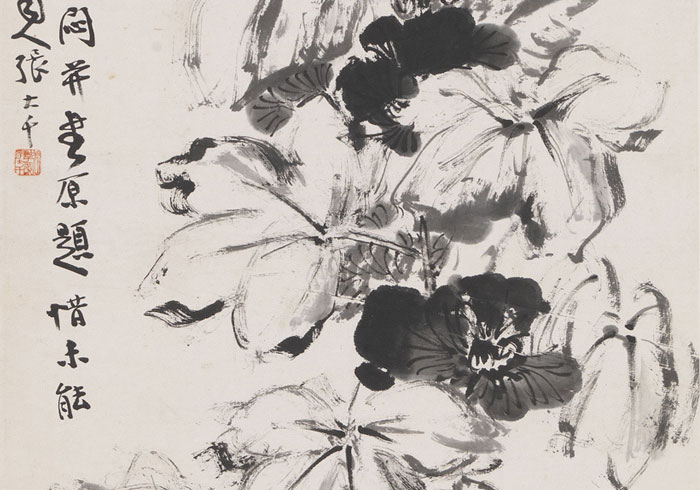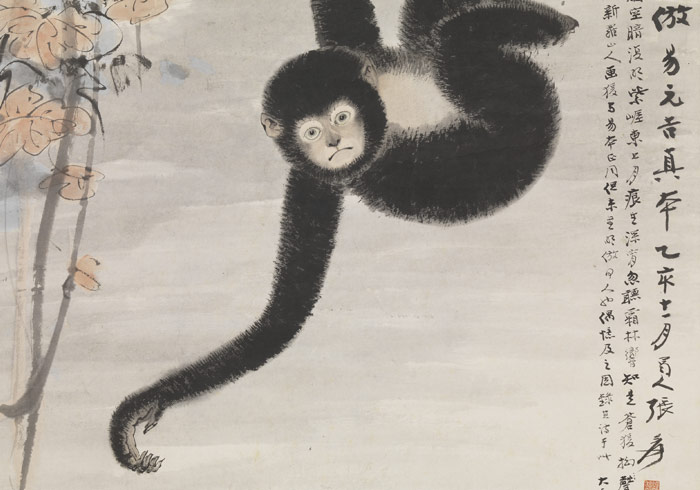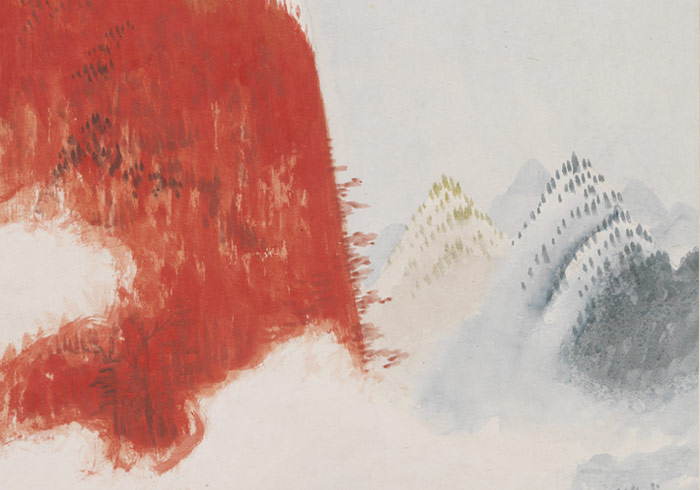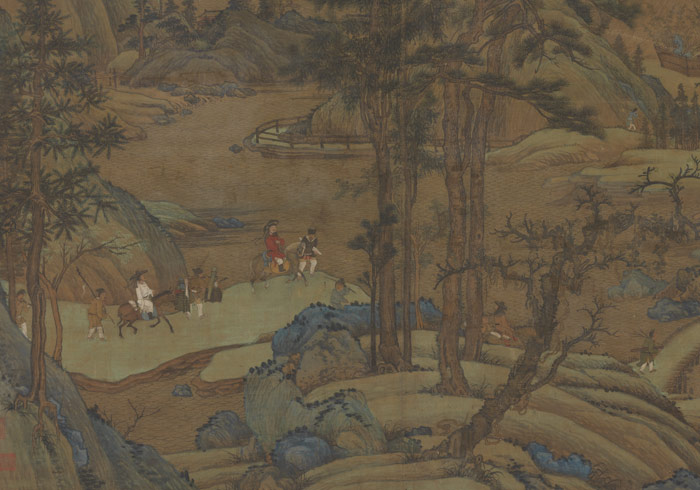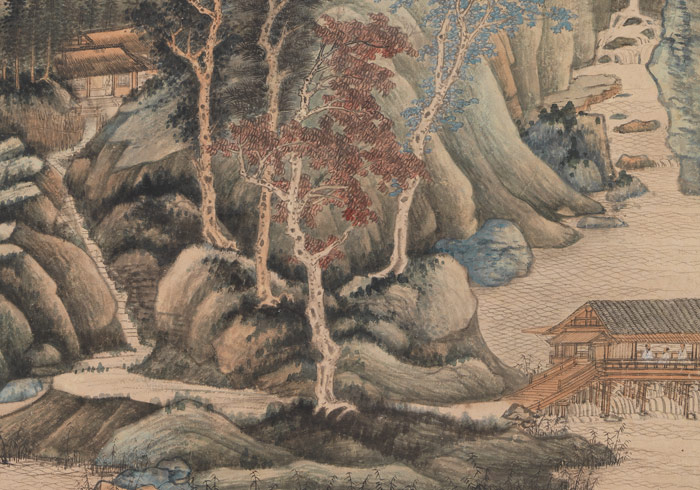Chang Dai-chien's goal in painting during the first half of his career was to achieve a "grand synthesis" of previous styles, taking the imitation of ancient works as a foundation for reaching it. He began with such seventeenth-century artists of the late Ming and early Qing period as Shitao, Bada shanren, and Zhang Feng. Later, as the scope of his interest in collecting and vision expanded, Chang reached back stylistically to masters of the Five Dynasties, Song, and Yuan periods. He also went so far as to travel to Dunhuang in northwestern Gansu and learn by copying the Tang dynasty and other early wall paintings there, further broadening his experiences in traditional Chinese art. As a result, he was able to balance training in the scholar arts with that of so-called craftsman painting, coming to excel at both ink and light colors as well as fine brushwork with heavy colors. Due to his study of many diverse artistic traditions, Chang Dai-chien was always capable of injecting a surprising sense of innovation, even into his imitations of ancient works. This section of the exhibition brings together works by Chang and previous masters, not only providing a glimpse at the diverse origins of his art, but also demonstrating the importance of "copying" in the formation of his style. Moreover, it demonstrates the new heights of creativity that he reached in various subjects. The works here include Dong Yuan's "Late Scenery Along a Riverbank," which entered Chang Dai-chien's Ta-feng Hall collection in 1946 and had an enormous impact on him. It also features Chang's "Imitation of Shen Zhou's Hollyhocks," representing a rare example of his study on this important Ming literati master.
Imitation of Shen Zhou's Hollyhocks
- Chang Dai-chien (1899-1983), Republican period
- Hanging scroll, ink on paper, 134 x 37 cm
Gibbon
- Chang Dai-chien (1899-1983), Republican period
- Hanging scroll, ink and colors on paper, 151 x 65 cm
Wu Mountains in Clouds and Rain
- Chang Dai-chien (1899-1983), Republican period
- Hanging scroll, ink and colors on paper, 100 x 38 cm
Late Scenery Along a Riverbank
- Dong Yuan (10th c.), Five Dynasties period
- Hanging scroll, ink and colors on silk, 179.5 x 116.5 cm
Chang Dai-chien first saw this painting in 1938 while in Beijing, and he later acquired it in 1946. He kept the scroll with him for the rest of his life. In addition to appreciating it, he also asked artists and figures of renown, such as Pu Ru, Xie Zhiliu, Pang Laichen, Wu Hufan, and Yeh Kung-chao, to write inscriptions on the paper attached to the scroll. Chang Dai-chien copied the old trees in this painting more than thirty times throughout the years, there surviving to date at least three copies by Chang of the entire composition. His rendering of the water ripples similar to fish scales derives from the study of this work, indicating the great influence on his style.
This painting was bequeathed to the National Palace Museum from Chang Dai-chien's Ta-feng Hall collection.

